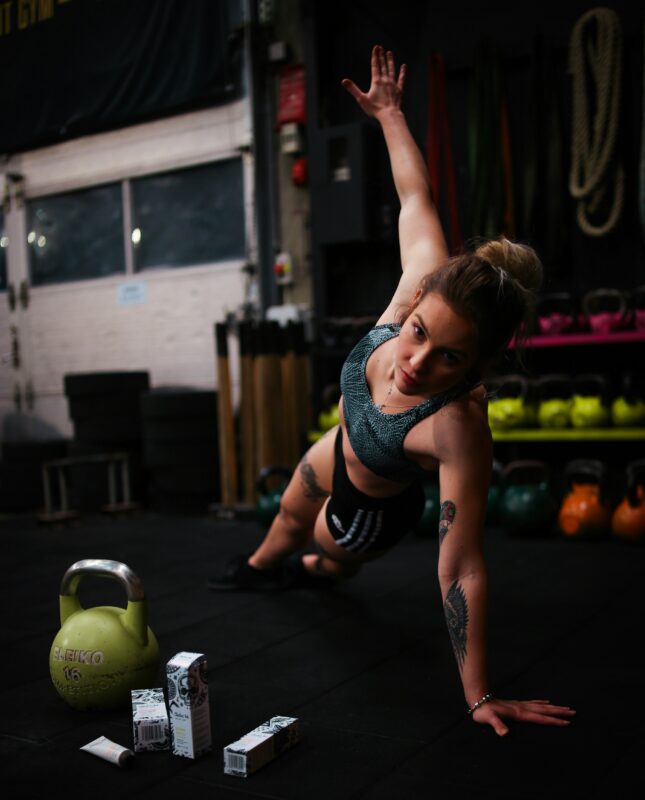HIGH-INTENSITY INTERVAL TRAINING
High-Intensity Interval Training (HIIT) Workouts to Try
As summer approaches, many of us aim to achieve a lean and toned physique. One of the most efficient and effective methods to burn fat and build muscle for a shredded look is High-Intensity Interval Training (HIIT).
HIIT workouts push your body to its limits through short bursts of intense exercise followed by brief periods of rest or low-intensity activity. This training method maximizes calorie burn and enhances cardiovascular fitness and metabolic rate.
This article explores HIIT and its benefits, top HIIT workouts to try, how to get started, and essential tips for integrating it into your fitness regimen for optimal summer results.
What is HIIT?
HIIT, or High-Intensity Interval Training, alternates short bursts of intense exercise—typically less than 20 seconds—with less intense recovery periods. The high-intensity intervals elevate your heart rate and challenge your muscles, while the recovery periods allow you to catch your breath before the next intense effort.
HIIT is renowned for its effectiveness in burning calories, improving cardiovascular health, aiding weight loss, boosting performance, and increasing metabolism in a shorter period. Most bodybuilders favor HIIT because it provides an amazing workout in under an hour. To achieve high intensity during HIIT, you must get your heart rate above 80%–95% of your maximum, making it hard to hold a normal conversation.
Benefits of High-Intensity Interval Training (HIIT)
HIIT offers numerous benefits for bodybuilders, enhancing muscle growth and overall fitness. Here are eight key benefits of incorporating HIIT into your routine:
- Muscle Retention: HIIT promotes muscle retention by creating micro-tears in muscle fibers, prompting repair and growth. It also stimulates anabolic hormones like testosterone and growth hormone, supporting muscle preservation even during calorie deficits.
- Increased Fat Loss: HIIT effectively burns body fat, particularly belly fat, by elevating the metabolic rate during and after workouts. Research shows that HIIT can burn more fat compared to traditional aerobic exercise.
- Increased Resting Metabolic Rate: HIIT increases your resting metabolic rate by creating an oxygen deficit during intense intervals. The “afterburn” effect continues to burn calories post-workout, elevating your metabolic rate for hours.
- Improved Cardiovascular Health: HIIT strengthens the heart and improves cardiovascular endurance by pushing your heart rate to near-maximum levels. It reduces blood pressure, bad cholesterol (LDL), and triglyceride levels, promoting heart health.
- Time Efficiency: HIIT workouts are typically shorter than traditional workout sessions, providing similar or greater benefits. This makes HIIT ideal for those with limited time.
- Burn More Calories: HIIT burns more calories in a shorter period than steady-state cardio. The afterburn effect, or excess post-exercise oxygen consumption (EPOC), ensures continued calorie burning post-workout.
- Muscle Endurance: HIIT improves muscle endurance by training the body to perform at high intensities, enhancing performance during weightlifting workouts.
- Variety and Adaptability: HIIT includes a range of exercises, from running and cycling to bodyweight exercises like burpees and squats, keeping workouts exciting and preventing boredom. HIIT can be performed anywhere, with or without equipment, and tailored to specific goals.
Top 7 HIIT Workouts
Here are some HIIT workouts to get you in shape for the summer:
- Tabata HIIT Workout: This involves 20 seconds of maximum effort followed by 10 seconds of rest, repeated for eight sets in a round lasting four minutes. Perform exercises like squat jumps, jumping jacks, and burpees.
- Circuit Training Workout: Complete a series of exercises targeting different muscle groups with minimal rest. Perform each exercise for 45 seconds with a 15-second rest between, repeating the circuit four times.
- Bodyweight HIIT Workout: Use only your body weight for resistance. Perform exercises like burpees, push-ups, and mountain climbers for 45 seconds with a 15-second rest, repeating each round three times.
- Full Body HIIT Workout: Perform exercises like burpees, push-ups, and mountain climbers for 40 seconds with a 20-second rest, repeating each circuit twice.
- Cardio and Core HIIT Workout: Focus on cardio and core exercises like high knees, Russian twists, and bicycle crunches. Perform each exercise for 40 seconds with a 20-second rest, repeating the circuit three to four times.
- Upper Body HIIT Workout: Target the upper body with exercises like push-up variations, renegade rows, and tricep dips. Perform each exercise for 40 seconds with a 20-second rest, repeating the circuit three to four times.
- Lower Body HIIT Workout: Focus on the lower body with exercises like jump squats, alternating reverse lunges, and glute bridges. Perform each exercise for 40 seconds with a 20-second rest, repeating the circuit three to four times.
Getting Started with HIIT
To start with HIIT, choose workouts that suit your fitness level and goals. Begin with shorter intervals and gradually increase intensity and duration. Ensure proper warm-up before starting and cool down after completing your HIIT session to prevent injuries and aid recovery.
Essential Tips for Integrating HIIT
- Consistency: Incorporate HIIT into your routine regularly, aiming for two to three sessions per week.
- Progression: Gradually increase the intensity and duration of your workouts as your fitness improves.
- Recovery: Allow adequate rest between HIIT sessions to enable muscle recovery and prevent burnout.
- Hydration and Nutrition: Stay hydrated and fuel your body with nutritious foods to support intense workouts.
Integrating HIIT into your fitness regimen can help you achieve your summer body goals by burning fat, building muscle, and improving overall fitness efficiently.

